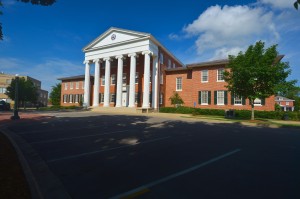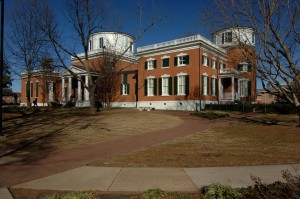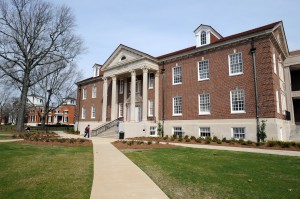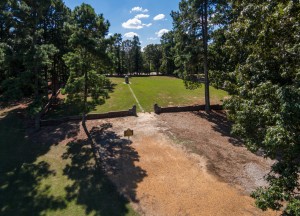Construction on the University of Mississippi’s first structures began in 1846. Since then, Ole Miss has been the site of many historic events creating quite an eerie past for some of the older buildings still standing.
And if the walls of those buildings could talk, I’m sure they’d have some very interesting stories to tell.
The Lyceum, completed in 1848, is the only survivor of the five original buildings. The administration building has become the symbol for Ole Miss, with its iconic columns, red brick and Ionic Greek Revival design. Those same columns still show bullet marks from the riots in 1962, which James Meredith became the first African-American student to enroll at the university.
Beyond those columns 100 years earlier, the Lyceum was an important building during the Civil War. It served as a hospital for wounded soldiers, serving both armies during the changing occupations of the area. The “Y Building,” now the Croft Institute for International Studies, which was completed in 1853, and Barnard Observatory, completed in 1859, also were used by the occupying forces.
Just across campus is Farley Hall, which is home to the Meek School of Journalism and New Media. A plaque outside the building designates the area as a “Dead House.” The building located on the site where Farley Hall stands was used as a morgue during the Civil War.
That building was demolished in 1958, and Farley Hall sits in its place. It is believed that the bodies in this morgue were carried across campus to the Civil War Cemetery, which contains more than 430 grave shafts.
There are several word-of-mouth accounts of people encountering a presence of, perhaps, a Civil War soldier or a student from around that time, but of course, that can’t be proven.
Thankfully, I have never personally had an experience with the supernatural on this campus. And I hope it stays that way.
Maybe you don’t believe in that sort of thing. Maybe you do. But now if you feel a presence yourself, you know the history.
Happy Halloween!



